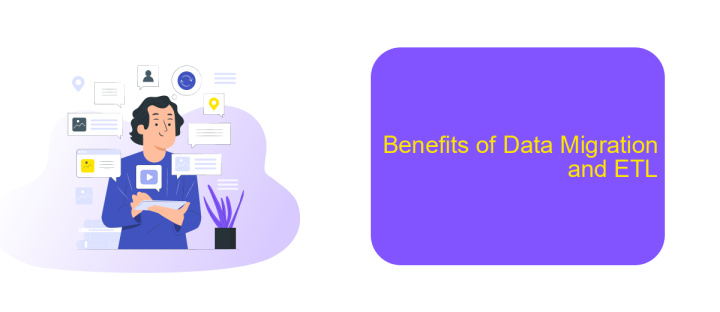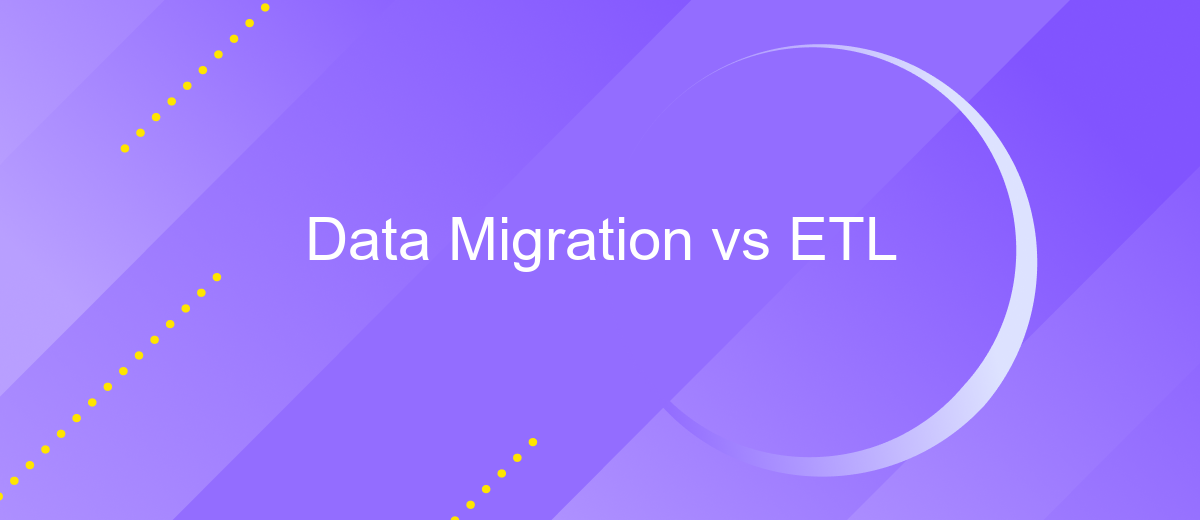Data Migration vs ETL
In the realm of data management, understanding the distinctions between Data Migration and ETL (Extract, Transform, Load) is crucial for successful project execution. While both processes involve moving data from one place to another, their purposes, methodologies, and outcomes differ significantly. This article delves into the key differences, helping you choose the right approach for your data-driven needs.
Introduction
Data migration and ETL (Extract, Transform, Load) are two critical processes in the realm of data management. While they may seem similar, they serve distinct purposes and are utilized in different scenarios. Understanding the differences between these two can help organizations make informed decisions when it comes to managing their data effectively.
- Data Migration: This involves transferring data from one system to another, often during system upgrades or consolidations.
- ETL: This process extracts data from various sources, transforms it into a suitable format, and loads it into a target database or data warehouse.
- Integration Services: Tools like ApiX-Drive can facilitate seamless integration between different systems, making both data migration and ETL processes more efficient.
Choosing the right approach depends on the specific needs of your organization. Whether you are upgrading systems or consolidating data, or extracting and transforming data for analysis, understanding the nuances of data migration and ETL will help you navigate these complex processes. Services like ApiX-Drive can further streamline these tasks, ensuring data integrity and efficiency.
Data Migration vs ETL: Similarities and Differences

Data migration and ETL (Extract, Transform, Load) are both essential processes in data management, but they serve different purposes and have distinct characteristics. Data migration involves moving data from one system to another, typically during system upgrades or consolidations. ETL, on the other hand, is a process used in data warehousing to extract data from multiple sources, transform it into a suitable format, and load it into a target database. Both processes require careful planning and execution to ensure data integrity and consistency.
Despite their differences, data migration and ETL share some similarities. Both processes involve data extraction and loading, and they often require data transformation to ensure compatibility with the target system. Tools like ApiX-Drive can facilitate these processes by automating data integration and ensuring seamless data flow between systems. ApiX-Drive supports a wide range of integrations, making it easier to manage data migration and ETL tasks efficiently. By leveraging such tools, organizations can minimize errors, reduce manual effort, and achieve more reliable data management outcomes.
When to Use Data Migration vs ETL

When deciding between data migration and ETL (Extract, Transform, Load), it's essential to consider the specific requirements of your project. Data migration is typically used for one-time transfers of data from one system to another, often during system upgrades or mergers. ETL, on the other hand, is a continuous process used for integrating data from multiple sources into a data warehouse for ongoing analysis and reporting.
- Use data migration when you need to move data between systems during upgrades or consolidations.
- Choose ETL for ongoing data integration and transformation tasks, especially when dealing with large volumes of data from various sources.
- Consider ETL if your project requires regular updates and data synchronization across systems.
- Data migration is ideal for projects with a defined start and end, while ETL is suitable for continuous data processing needs.
For seamless integration and automation of data migration or ETL processes, tools like ApiX-Drive can be invaluable. ApiX-Drive allows you to set up automated workflows, ensuring that data is accurately transferred and transformed according to your business requirements. This can save time and reduce the risk of errors in your data management processes.
Benefits of Data Migration and ETL

Data migration and ETL (Extract, Transform, Load) are critical processes for managing and optimizing data flows within organizations. Both approaches offer unique benefits that can significantly enhance business operations and decision-making.
Data migration involves transferring data from one system to another, ensuring data consistency and integrity. On the other hand, ETL processes help in extracting data from various sources, transforming it into a suitable format, and loading it into a target database or data warehouse.
- Improved data quality and consistency
- Enhanced decision-making through better data insights
- Streamlined business processes and operations
- Seamless integration of diverse data sources
- Scalability to handle growing data volumes
Tools like ApiX-Drive can facilitate these processes by automating data integration and ensuring seamless connectivity between different systems and applications. By leveraging such services, organizations can reduce manual intervention, minimize errors, and achieve faster and more efficient data management.
- Automate the work of an online store or landing
- Empower through integration
- Don't spend money on programmers and integrators
- Save time by automating routine tasks
Conclusion
In conclusion, both data migration and ETL (Extract, Transform, Load) processes are critical for managing and utilizing data effectively. While data migration focuses on transferring data from one system to another, ETL processes are essential for extracting data from various sources, transforming it to fit operational needs, and loading it into a target database. Each approach has its unique benefits and challenges, and the choice between them depends largely on the specific requirements of the project and the existing data infrastructure.
For those looking to streamline their data integration processes, services like ApiX-Drive offer valuable solutions. ApiX-Drive simplifies the setup of integrations between different platforms, enabling seamless data flow and improving overall efficiency. By leveraging such tools, organizations can ensure that their data migration and ETL processes are not only effective but also scalable and adaptable to future needs. Ultimately, the right strategy and tools can significantly enhance data management capabilities, leading to better decision-making and business outcomes.
FAQ
What is the main difference between Data Migration and ETL?
When should I use Data Migration instead of ETL?
Can Data Migration and ETL be automated?
What are the common challenges in Data Migration?
Is it necessary to perform data transformation during Data Migration?
Routine tasks take a lot of time from employees? Do they burn out, do not have enough working day for the main duties and important things? Do you understand that the only way out of this situation in modern realities is automation? Try Apix-Drive for free and make sure that the online connector in 5 minutes of setting up integration will remove a significant part of the routine from your life and free up time for you and your employees.


